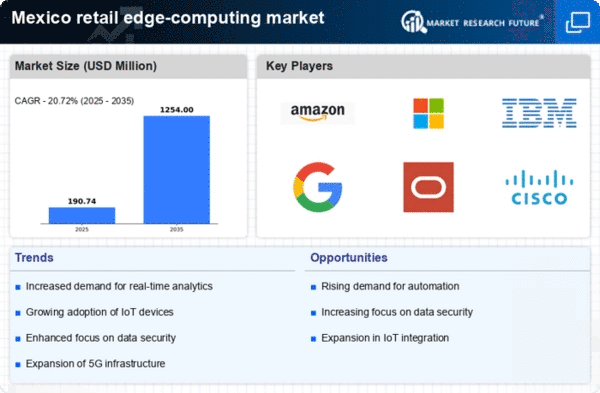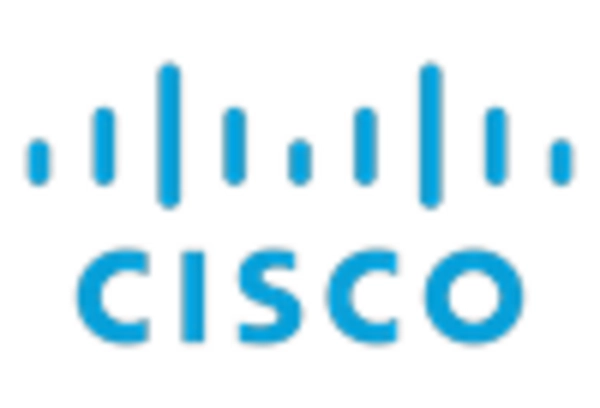Expansion of 5G Infrastructure
The expansion of 5G infrastructure in Mexico is poised to significantly impact the retail edge-computing market. With the rollout of 5G technology, retailers can expect enhanced connectivity and faster data transmission speeds. This technological advancement allows for more efficient processing of data at the edge, which is crucial for applications such as augmented reality and real-time inventory tracking. As of November 2025, it is estimated that 5G coverage in urban areas of Mexico has reached approximately 60%. This increased connectivity is likely to drive the adoption of edge-computing solutions, enabling retailers to optimize their operations and improve customer engagement through innovative applications.
Growing Demand for Real-Time Analytics
The retail edge-computing market in Mexico is experiencing a surge in demand for real-time analytics. Retailers are increasingly seeking to leverage data at the edge to enhance decision-making processes. This trend is driven by the need for immediate insights into customer behavior and inventory management. According to recent data, approximately 70% of retailers in Mexico are investing in edge-computing solutions to facilitate faster data processing. By utilizing edge computing, businesses can analyze data locally, reducing latency and improving operational efficiency. This shift towards real-time analytics is likely to reshape the retail landscape, enabling companies to respond swiftly to market changes and consumer preferences, thereby enhancing their competitive edge.
Integration of Artificial Intelligence
The integration of artificial intelligence (AI) into the retail edge-computing market is becoming increasingly prevalent in Mexico. Retailers are leveraging AI algorithms to analyze data collected at the edge, enabling them to gain deeper insights into consumer behavior and preferences. This trend is expected to enhance personalized marketing strategies and improve inventory management. As of November 2025, it is projected that around 40% of retailers in Mexico are utilizing AI-driven edge-computing solutions. The combination of AI and edge computing is likely to transform the retail landscape, allowing businesses to make data-driven decisions that enhance customer satisfaction and drive sales.
Rising Focus on Operational Efficiency
In the retail edge-computing market, there is a notable emphasis on operational efficiency among Mexican retailers. Companies are increasingly adopting edge-computing technologies to streamline their operations and reduce costs. By processing data closer to the source, retailers can minimize bandwidth usage and lower latency, which can lead to significant cost savings. Reports indicate that businesses utilizing edge computing have experienced up to a 30% reduction in operational costs. This focus on efficiency is likely to drive further investments in edge-computing solutions, as retailers seek to enhance their productivity and maintain a competitive advantage in a rapidly evolving market.
Increased Investment in Smart Retail Technologies
The retail edge-computing market in Mexico is witnessing a rise in investment in smart retail technologies. Retailers are increasingly adopting solutions that incorporate edge computing to enhance their operational capabilities. This trend is driven by the need to improve customer experiences and streamline supply chain processes. Recent data suggests that investments in smart retail technologies are expected to grow by approximately 25% over the next five years. This influx of capital is likely to accelerate the development and deployment of edge-computing solutions, enabling retailers to harness the power of data and technology to meet evolving consumer demands.

















Leave a Comment